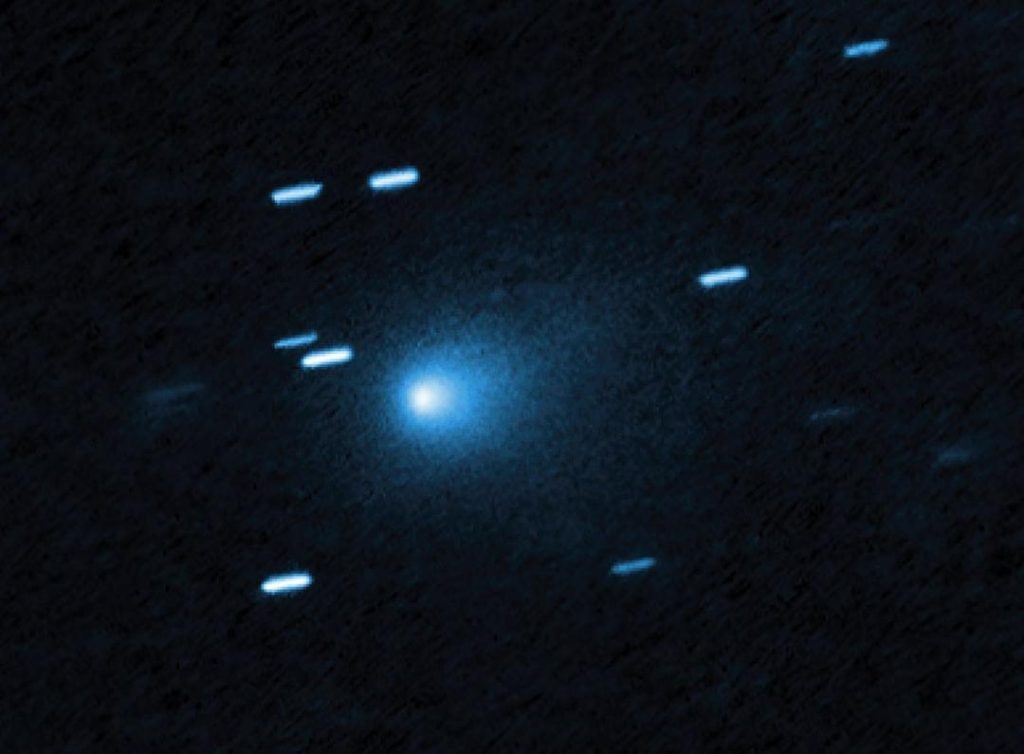
Clearest-ever pic of mysterious interstellar object flying at 2,09,215-kmph speed released
In a groundbreaking achievement, a team of astronomers has captured the sharpest-ever image of the mysterious interstellar object, 3I/ATLAS, using the iconic NASA’s Hubble Space Telescope. The incredible picture provides a glimpse into the unknown, offering new insights into the nature and origin of this enigmatic visitor from beyond our solar system.
The interstellar object, officially known as 3I/ATLAS, is an extraordinary visitor that has been drifting through interstellar space for many billions of years. Its journey took a sudden turn when it entered our solar system, and astronomers have been fascinated by its unusual velocity and trajectory. According to NASA, 3I/ATLAS is traveling at an astonishing speed of 2,09,215 kmph, the highest velocity ever recorded for a solar system visitor.
The sharpest-ever picture of 3I/ATLAS was captured using the Hubble Space Telescope’s Wide Field Camera 3 (WFC3). The image reveals striking details of the object’s surface, showcasing a bright, icy nucleus surrounded by a faint dust trail. The picture is a testament to the incredible capabilities of the Hubble Space Telescope, which has been instrumental in expanding our understanding of the universe.
The discovery of 3I/ATLAS was made in 2019 by the ATLAS (Asteroid Terrestrial-impact Last Alert System) survey, a robotic telescope system designed to detect near-Earth objects and potentially hazardous asteroids. Initially, astronomers thought it was a comet, but further observations revealed it to be an interstellar object, unlike any seen before.
Interstellar objects are extremely rare, and 3I/ATLAS is one of only a few confirmed interstellar visitors to our solar system. Its origin is still a mystery, but scientists believe it may have originated from a nearby star system or even a distant galaxy. The object’s unusual velocity and trajectory suggest that it may have been perturbed by the gravitational influence of a nearby star or other celestial body.
The Hubble Space Telescope’s high-resolution image of 3I/ATLAS has provided valuable insights into the object’s size and shape. Scientists have estimated its size to be around 300-400 meters in diameter, roughly the size of a large building. The image also reveals a distinctive “tail” of dust and debris trailing behind the object, which is a common feature of comets and asteroids.
The discovery of 3I/ATLAS has sparked a flurry of scientific interest, with astronomers and researchers eager to learn more about this enigmatic visitor. The object’s unusual velocity and trajectory have raised questions about its composition and the forces that shaped its journey. Scientists are also curious about the possibility of other interstellar objects lurking in the depths of our solar system, waiting to be discovered.
The Hubble Space Telescope has played a pivotal role in the study of 3I/ATLAS, providing astronomers with a unique opportunity to study this interstellar object in unprecedented detail. The telescope’s observations have shed new light on the object’s composition, size, and shape, paving the way for further research and analysis.
As we continue to explore the mysteries of the universe, discoveries like 3I/ATLAS remind us of the vast and uncharted territories that lie beyond our solar system. The discovery of this interstellar object is a testament to the incredible capabilities of modern astronomy and the boundless wonders that await us in the cosmos.






